Preparing Year End accounts for funder assessment
Date
22 April 2021
Share

Assessing individual clients and assigning each client a “risk grade” has long been a function of how lenders manage their portfolios and assess the risk of any individual transaction.
A trend in the banking and finance company sector is the increased reliance on these risk grades and a reduced ability of front-line bankers to override or influence system driven risk grades. Data goes in, a number spits out, and that drives the way a funder will look at a deal. These factors impact the ability of any funder to support their existing clients, impact the interest rates a lender will offer their clients, and influence appetite to support new clients. This article provides an overview of how to best present your business’s financial accounts and management capability to a funder.
Each lender has their own system for determining and grading individual customers and it is important that businesses consider how to present themselves to funders.
For smaller customers, these processes will largely be “backward looking” and make a high-level assessment based on account conduct, credit scores, time in business, industry segments and an overview of financial information.
For larger organisations, risk grading is primarily driven by inputting historic customer financial accounts into a risk grading system. Some funders will consider the impact of good quality financial forecasts. It is typical that some “soft factors” are also included in this assessment. Soft factors can include subjective assessments as to each client’s management ability, degree of customer concentration, time in business etc. Account conduct will also be a factor, with late payments or overdraft excesses negatively impacting risk grading.
Increasingly, credit scores provided by the likes of Equifax or Centrix are considered by funders. These systems are becoming more accurate as many organisations feed positive and negative payment data into them. Historically, your personal and business credit score was only negatively impacted by major issues such as defaults for late payment being formally lodged. Newer systems look at “real time” payment behaviour. As an example, regular but minor account infractions may negatively impact your credit score.
Finance New Zealand can place our clients’ transactions with different bank and finance company funding partners. As we do so, our team frequently finds that each funder’s risk grading system will provide a different output based on similar inputs. The same set of customer financial accounts may provide a strong risk grade with one funder, but only a moderate risk grade with another. Part of our role is to ensure that the right information is presented to each lender and that we influence what may positively or negatively impact risk scores. This is important and this risk grade then determines a range of factors including:
- Willingness of the lender to look at a deal. In an environment where most of the banks are capacity constrained, they are tending to defer towards deals that fit their risk grade criteria. They may exclude completely a deal that fails to meet minimum criteria regardless of what mitigants can be put forward.
- Security parameters. Weaker risk grades tend to drive lenders towards asking for more security, lower loan to value ratios and more aggressive loan amortisation. Strong risk grades may, for example, enable a borrower to negotiate to provide less security to a funder or remove personal guarantees.
- Pricing. The amount of capital a funder needs to allocate to a deal is “risk adjusted”. The better the risk grade the lower the interest rate a funder will typically be willing to offer.
So what can you do to influence the risk grading process?
Most important is to provide good quality financial information in a timely manner. With accounting packages such as MYOB and Xero now being widely used, lenders expect accurate management reporting to be readily available. Formal accountant prepared financial statements are generally expected within 90-180 days of financial year end.
When working with your accountant on preparing financial accounts you could consider:
- Impact of cash on hand. Many funder models are weighted towards the amount of free cash that a borrower has on hand. By showing, for example, cash that can be drawn from revolving credit facilities as cash on hand rather than a lower term debt amount, you may improve your risk grading.
- Showing loan term debt as a term liability. Occasionally we see accountants classify longer term debt that is approaching its documented maturity (but will be rolled over) or facilities such as asset finance revolvers that are technically “on demand” as short-term liabilities. This negatively impacts working capital ratios and will drive down a risk grade. While technically this may be correct in some circumstances, if the profile of the debt is long-term it is best to treat this as such.
- Shareholder Current Accounts vs. retained earnings. We often see businesses with minimal retained earnings but good balances in Shareholder Current Accounts as accountants have stripped out historic profits. While this is “quasi equity” many funder risk grading systems will treat this a debt rather than equity. Risk grades will generally be improved where there are genuine retained earnings or paid-up capital in a balance sheet.
- We often see balance sheets weakened by asset depreciated book values being below current fair market value. This tends to happen when depreciation rates are set on IRD tables and over time these can result in book value being well below market value for certain types of plant & machinery. In addition, land & buildings are often on book at historic purchase prices and do not take into account increase in asset value over time. Consider using realistic asset revaluation reserves to show the true asset value on your balance sheet.
- Consider adding schedules into the notes section of your year-end accounts that show a break down of existing term loan commitments by balance, lender, term, monthly payment, and interest rate. This will speed up and simplify funder assessment of your capacity to service existing and any new proposed debt commitments.
- Consider showing three years history in one set of financial accounts. Funders always want to see this as it provides for better analysis of trends in your business.
- Include a genuine Cost of Goods Sold section in the Profit & Loss statement. This provides decision makers and funders with relevant and comparable information when compared to one “lumped” singular expense category.
The Finance New Zealand team can provide an overview of how best to present your business to any funder.
Similar Posts
07 February 2024
Business finance news: The finance sector regulatory environment
Many businesses will welcome a change in government to one seen as more business friendly. Within the financial sector we expect to see the following impacts in the short term:

07 February 2024
Business finance news: The domestic economy
Business confidence has improved since late 2023 but remains a mixed bag. This mirrors what we are seeing across our own business. As we have returned from summer holidays, there seems a more optimistic attitude within our client base.


Page Links
Contact us
Finance New Zealand Limited L11 BDO Tower, 19-21 Como Street, Takapuna, Auckland 0622 PO Box 65164, Mairangi Bay 0754 T: (09) 222 0320E: info@financenz.co.nzMember of


Proud Sponsors of Auckland Rescue Helicopter Trust
Copyright Finance New Zealand Ltd 2024



